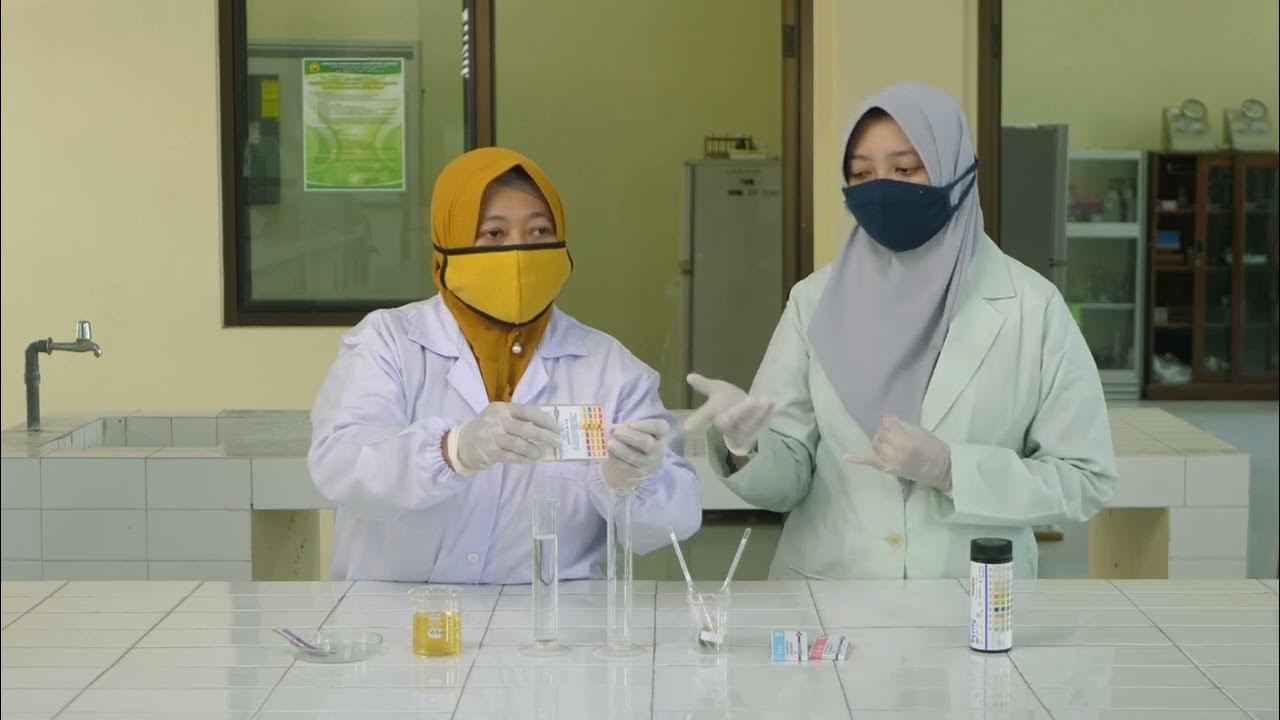Complete Urinalysis
Summary
TLDRThis video demonstrates a comprehensive urinalysis test, starting with the examination of the physical characteristics of the urine sample, such as color and clarity. Quality control is performed with two levels, ensuring the accuracy of test results. The analyzer is set up, and the operator enters the relevant details. The process involves using test strips, documenting results, and conducting patient testing. Special attention is paid to ensuring correct handling and recording, especially with physical characteristics and potential corrections. The importance of microscopic examination for cloudy samples and protein detection is emphasized, concluding with the need for further analysis based on the findings.
Takeaways
- 😀 Ensure the urine sample is properly examined for physical characteristics such as color and clarity.
- 😀 Before starting any tests, perform quality control with both normal (level 1) and abnormal (level 2) controls.
- 😀 Always identify the operator performing the test, whether by name, initials, or employee number, for audit purposes.
- 😀 When using the analyzer, confirm it's fully functional and conduct a system check before proceeding.
- 😀 Clean the analyzer tray between samples to prevent cross-contamination, even if the previous person cleaned it.
- 😀 Always document the test type and identify what quality control level you're using to ensure accuracy in results.
- 😀 The analyzer automates the reading of urine test strips, standardizing the process and minimizing human error.
- 😀 Be aware of the time limits when handling test strips; careful timing ensures the correct results are captured.
- 😀 For patient testing, ensure the strip is placed in the urine sample properly within the allotted time.
- 😀 Strips should be handled with care to avoid exposure to light or humidity, which can affect the test results.
- 😀 When color or clarity isn't clearly observable, use the 'other' option and correct any misentries to ensure accurate reporting.
Q & A
What is the first step in conducting a urinalysis test?
-The first step is to examine the physical characteristics of the urine sample, including its color and clarity, before proceeding with any testing.
Why is quality control important in a urinalysis test?
-Quality control ensures that the testing strips used in the urinalysis are functioning correctly and that both positive and negative results can be detected. It helps maintain the accuracy of the results.
What are the two levels of quality control used in the urinalysis process?
-The two levels of quality control are Level 1 (normal control) and Level 2 (abnormal control), which help verify the functionality of the testing strips.
How is the analyzer set up to perform the urinalysis test?
-The analyzer is turned on, and the system performs a check to ensure its electronics and functions are operating correctly. The operator’s name is entered to identify who is performing the test.
What happens during the 'strip test' phase of the urinalysis?
-During the strip test, a reagent strip is immersed into the urine sample, and the analyzer monitors the test pads for specific reactions. The time for each pad's reaction is automatically recorded.
How is the color and clarity of the urine sample recorded in the analyzer?
-Since the physical characteristics can't be directly observed during quality control, the analyzer prompts the user to select 'other' for color and clarity, which are later manually entered based on visual inspection.
What happens if the test strip is not placed correctly in the urine sample?
-If the test strip is misaligned or improperly placed, the analyzer may not register the test properly, requiring the test to be repeated.
What is the role of the physical characteristics (color and clarity) in the urinalysis results?
-Physical characteristics such as color and clarity are important in assessing the sample for abnormalities. For instance, cloudy urine may indicate potential issues like protein or infection, which may need further microscopic analysis.
Why is it important to perform urinalysis tests with speed and accuracy?
-Speed and accuracy are crucial to prevent errors in timing and to ensure the proper processing of test reactions. Delays in handling the sample or test strips may lead to inaccurate results.
What might cause cloudy urine in the context of a urinalysis test?
-Cloudy urine may indicate the presence of particles such as cells, crystals, or bacteria, which could suggest an infection or other underlying conditions that require further microscopic examination.
Outlines

Esta sección está disponible solo para usuarios con suscripción. Por favor, mejora tu plan para acceder a esta parte.
Mejorar ahoraMindmap

Esta sección está disponible solo para usuarios con suscripción. Por favor, mejora tu plan para acceder a esta parte.
Mejorar ahoraKeywords

Esta sección está disponible solo para usuarios con suscripción. Por favor, mejora tu plan para acceder a esta parte.
Mejorar ahoraHighlights

Esta sección está disponible solo para usuarios con suscripción. Por favor, mejora tu plan para acceder a esta parte.
Mejorar ahoraTranscripts

Esta sección está disponible solo para usuarios con suscripción. Por favor, mejora tu plan para acceder a esta parte.
Mejorar ahoraVer Más Videos Relacionados

Praktikum Sistem Ekskresi - Uji Kandungan Urin

ANALISIS URIN DENGAN URIC STRIP | ANFISMAN - STFI Bandung

PATOLOGI KLINIK - PEMERIKSAAN FISIK URIN

PEMERIKSAAN URINE CARIK CELUP | VIDEO PEMBELAJARAN PRAKTIKUM | DEPARTEMEN PATOLOGI KLINIK FK UNILA

Benzidine test || Blood in urine || Hematuria || #Biochemistry

Persiapan Pengambilan Sampel Urine
5.0 / 5 (0 votes)
